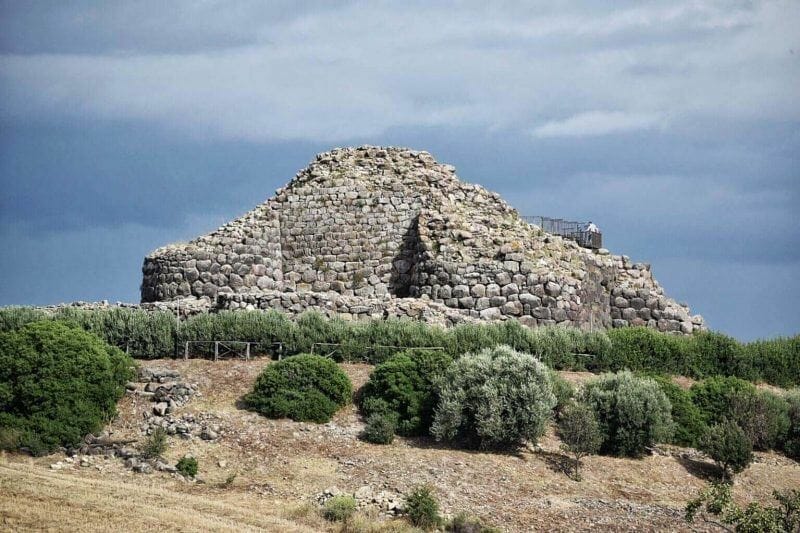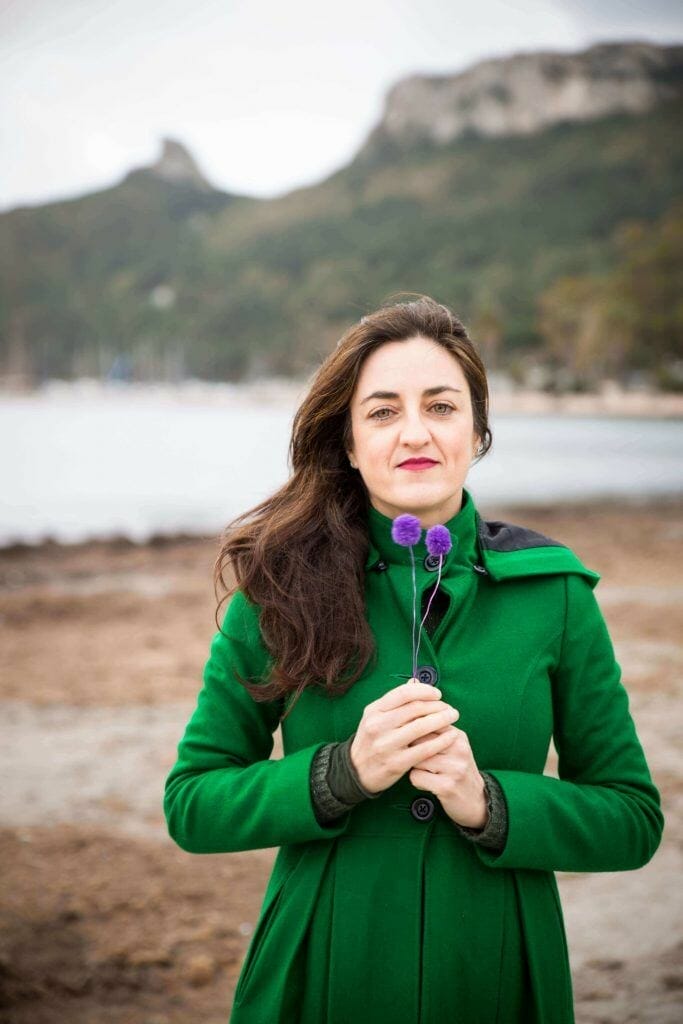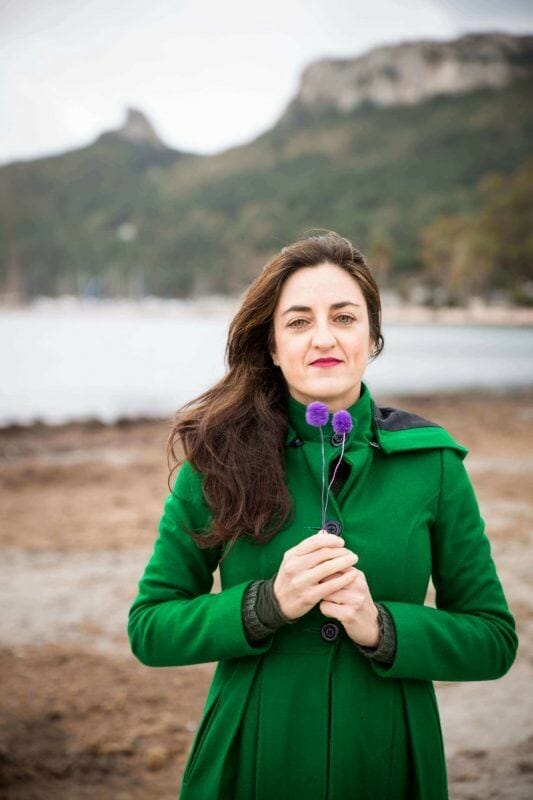If you really care to understand the culture and people of Sardinia, you need to have at least a vague idea of the history of Sardinia – this is the key to better appreciate the island beyond its paradisiac beaches.
You see, the history of the island is unique, multi-layered and incredibly interesting – albeit a bit complicated.
Populated since the Neolithic time, Sardinia saw many cultures and civilizations – Phoenicians, Carthaginians and Romans are just a few – and with that it has become an incredible conundrum of interesting archeological sites, fascinating cultures, and a language that to date remains the closest to Latin among the neo-Latin ones.
In this post, I will give you a short – but solid! – background on the history of Sardinia, by describing the main civilizations that lived on the island and suggesting the best places to visit to get acquainted with them.
Make sure to also read my posts The Most Popular Sardinian Myths And Legends and How Sardinia Got Its Name.

Table of Contents
The History Of Sardinia
How Sardinia got its name
The origins of the name of the island are uncertain. The only thing we know is that it was given to the island before the Romans arrived, as testified by the stelae of Nora, which dates back to Phoenician times and was found in 1773 in Sant’Efisio church, in Pula.
Some researchers suggest that the Sherden, Sea People who between the 13th and the 12th centuries BCE fought in Egypt, are the ones who gave Sardinia its name.
But that is only one theory. Others believe that the name is linked to Sardò, a female character in Plato’s Timeo. A third theory suggests that the name derives from Sardus, son of Hercules, who, according to Roman historian and senator Sallust, arrived in Sardinia from Lybia.
The Nuragic Civilization
The Nuragic civilization makes up for an important part of Sardinian history.
Unfortunately there are no written records – and as such, no easy-to-verify information – about the Nuragic civilization that lived in Sardinia in the Bronze Age. These people were responsible for the construction of roughly 7000 nuraghi – truncated conic structures of basalt blocks coming from extinct volcanoes and put together without any mortar – between 1500 and 400 BCE.
The first nuraghe built in Sardinia, the protonuraghe, had an irregular shape and rarely were more than 10 meters tall. The main building had a circular plan inside, and a variety of corridors led to smaller rooms; they also had a terrace.
What we now see for the most part are the tholos nuraghe, which have a cone shape and had two or more floors inside. The complex version of tholos saw the construction of a main tower with further elements added to it at subsequent moments.
The Nuragic civilization was a highly organized, tribal state whose wealth came from the mining of metals of which the island was rich. People were divided in clearly defined social classes, where the majority were shepherds, farmers and craftsmen. Soldiers and landowners were the aristocracy; whereas the priests were the depositories of medicine, religious rituals and ruled the villages.
If you wish to get yourself acquainted with the Nuragic civilization, there several places to visit:
ARCHEOLOGICAL MUSEUM OF CAGLIARI – Open Tuesday to Sunday from 9:00 am to 8:00 pm, this is one of the best museums in Sardinia and has an impressive collection of pre-Nuragic and Nuragic artefacts.
MUSEO CIVICO MARONGIU, CABRAS – Open daily from 10:00 am to 6:00 pm, the main attraction there is the Giants of Mont’e Prama, large statues discovered by chance in 1974 that date back to nuragic times and depict archers, wrestlers and boxers.
SU NURAXI, BARUMINI – Open daily from 9:00 am to 5:00 or 8:00 pm depending on the season, this UNESCO World Heritage Site is the finest example of nuraghe. It is located at about 45 minutes drive from Cagliari. Admission includes a guided tour.
Alternatively, you can go there on guided tours departing from Cagliari.
I recommend this guided tour of Su Nuraxi from Cagliari that also stops at the Casa Zapata museum nearby, and another archeological site.
NURAGHE LOSA, ABBASANTA – Open daily from 9:00 am to one hour before sunset, the complex has a triangular shape with a central tower of 13 meters with a spiral ramp and two side towers.
For the best nuraghe to visit in Sardinia, check out my post A Quick Guide To Visiting Su Nuraxi, Sardinia and The Most Interesting Nuraghe In Sardinia.

The Phoenicians and Carthaginians
The second main stage of the history of Sardinia is represented by Phoenician rule and the subsequent Carthaginian leadership.
The mines, the fertile soil with the many olive groves and olive oil production, and the strategic position of Sardinia naturally attracted Phoenician shippers and traders, who founded important cities such as Caralis – Sardinia’s capital city of Cagliari; Sulci (the modern Sant’Antioco), and Tharros, which back then was the most important commercial port on the island.
The Greeks were also attracted by Sardinia, but their attempt to invade from Olbia, in northeastern Sardinia, during the 6th century, was blocked by the Phoenicians, who managed to engage with the local population peacefully, to the point that both sides gained from the coexistence on the island.
Tophets – Phoenician sanctuaries and places of worship – found across the island testify to the peaceful coexistence of Phoenicians and Sardinians.
When the Carthaginian, led by generals Amilcare and Asdrubale, arrived on the island around 500 BCE, the Proto-Sardinians were pushed into the mountains, and the urban development led by the Phoenician and Nuragic civilizations came to a halt.
When the Carthaginians took over, they brought to the island their most traditional forms of government, with two judges – known as Sufiti – as leaders for a period of a year, assisted by an assembly of elders.
The Punic period marked new, important relationship with the Romans, which were interested in trading with Sardinians.
To witness this period you can visit several places. Here are the most important ones:
ARCHEOLOGICAL MUSEUM OF CAGLIARI – See above for further information.
THARROS ARCHEOLOGICAL SITE, SINIS PENINSULA – Open daily from 9:00 am to 5:00 or 8:00 pm depending on the season, Tharros is a stunning site that shows the historical stratifications present on the island, with testimony of the presence of the Phoenician, Punic as well as Roman civilizations. A combination ticket will also provide admission to the Civic Museum of Cabras.
For more information, read my Complete Guide To Tharros.
NORA ARCHEOLOGICAL SITE, PULA – Open every day from 9:00 am until one hour before sunset, this beautiful city dates back to the 8th century and its history is similar to that of Tharros, as it saw Phoenician, Carthaginian, and Roman domination. The most important sights there are the tophet (aka the Phoenician-Punic cemetery), the Temple of Tanit, and the Nora Stone.
My post How To Visit Nora Ruins provides more insightful information about this unique site.
If you don’t have a car, this guided tour of Nora departing from Cagliari is an excellent option.
TUVIXEDDU NECROPOLIS, CAGLIARI – Open every day from early morning this late at night, and free to access, this Punic necropolis is the largest in the Mediterranean.
I have a dedicated Guide To Tuvixeddu where you can learn more about this unique necropolis.

The Roman Conquest
The Romans have an important role in the history of Sardinia. They conquered the island in 238 BCE, taking advantage of a revolt by Carthaginian mercenaries.
The native tribes tried to resist the conquest but were decimated and eventually Sardinia became a Roman province, a mere colony where local inhabitants were forced to pay taxes in the form of cereals to be sent to Rome and each and every attempt to rebel pushed them more and more into the mountains, in what’s today’s Barbagia (whose inhabitants are known as Barbaricini).
During the Roman domination of Sardinia there were many administrative changes – which testify of how hard it was for the Romans to keep control of the island. At the time of Pliny, Cagliari was the only city with Roman civic rights.
Turris Libisonis (Porto Torres, at the north of Sardinia), was founded as a granary and a deposit to send cereals to the main land. Sardinia was used as a place of exile.
There are many places where you can experience the Roman influence in the history of Sardinia. Other than the above mentioned sites of Nora and Tharros, you may want to visit these:
ROMAN AMPHITHEATER, CAGLIARI – Open every day from 9:00 am to 5:00 or 7:00 pm, depending on the season, and costing just €3 to visit, this massive theater was carved directly into the rock during the 2nd century AD and could hold up to 10000 spectators. Not far from it, you can also visit Villa Tigellio.
PORTO TORRES BRIDGE – This 135 meters long, seven arches bridge was used as a public bridge until 1980. Since then, it’s been restored and can now be visited.

The Pisans and Genoese
After Sardinia was invaded by the Vandals and the Moors (or Saracens, as you may prefer calling them), the history of Sardinia takes us to a period or relative stability in the 11th century, when the island was divided in the four giudicati of Cagliari, Arborea, Torres and Gallura.
Unfortunately they didn’t last long, and Sardinia was soon conquered by the Pisans – who settled in the south and east of Sardinia; and the Genoese – in the north and west.
If you are keen on seeing examples of Pisan and Genoese influence in the history of Sardinia, you can visit the following sites:
BASILICA DI SACCARGIA, CODRONGIANOS – One of the most beautiful churches in Sardinia, it’s built in striped white limestone and black basalt and dates back to the 12th century.
TORRI PISANE, CAGLIARI – The two towers of Cagliari – San Pancrazio and Dell’Elefante are two of the most notable Pisan buildings in the Sardinian capital. You can currently access just San Pancrazio Tower for impressive views of the city.
MALASPINA CASTLE, BOSA – Open daily from 10:00 am to 7:30 pm, Malaspina Castle (also known as Serravalle Castle) is a great example of the Genoese presence on the island. Little remains of the castle, but the chapel inside has some beautiful frescoes and the views from it are impressive.
DORIA CASTLE, CASTELSARDO – Built for the Genoese Doria family this castle is usually open from either 9:00 or 10:00 am to 5:00 and 7:30 pm and even midnight in the summer months.
Make sure to read my posts A Quick Guide To Castelsardo and The Most Captivating Castles In Sardinia.

The Aragonese
The Aragonese domination makes up for a very important part of the history of Sardinia.
James II of Aragon became king of Sardinia and Corsica in 1297, but it was not until 1323-1324 that the Aragonese managed to actually exercise their power over the island thanks to the efforts of Alfonso, son of the king and soon to become King Alfonso IV, and the cooperation of the only remaining Giudicato, that of Arborea.
In 1350 a strenuous and long war broke between the Giudicato of Arborea – at the time held by Judge Mariano IV, and once he died by his daughter Eleonora – and King Peter IV of Aragon.
Arborea was fully annexed to the Aragonese crown in 1478.
Under the Aragonese, Sardinia was given a viceroy who resided in Cagliari. Alfonso V extended the Carta de Logu – the law code of the Giudicato of Arborea – to the rest of the island, but under the Aragonese rule, with every single thing having to go under the scrutiny of the king, progress in the island was minimal.
Locals were vexed by taxes and oppressed, and they remained such even later on when, together with Aragon, Sardinia became part of the unified kingdom of Spain.
You can find examples of the Aragonese and Spanish domination of Sardinia in many places, but the best example is the Aragonese watchtowers.
THE ARAGONESE WATCHTOWERS – Scattered around the island and testimony of this part of the history of Sardinia you will find more than 100 watchtowers. They had protective purposes and were strategically placed along the coast so that from each one of them, soldiers inside could see the ones next to them and easily communicate in case of emergency – ie when they saw the enemy approaching from the sea.

The Austrian and the Savoy
After the Spanish Succession War, during which Cagliari was bombarded by an English fleet, Sardinia fell under Austrian rule – as affirmed by the Treaty of Utrecht in 1713.
The island was then surrendered to Victor Amadeus II of Savoy with the 1718 Treaty of London, and remained part of the Kingdom of Piedmont (which then became the Kingdom of Sardinia) until the unification of Italy in 1861.
Attempts to invade the island were made by the French in 1793, in the years of the French Revolution. In fact, King Charles Emmanuel IV moved to Sardinia from Turin, the capital of the reign, for a few months when Piedmont was taken over by the French in 1799. His successor, Victor Emanuel I, lived in Cagliari for 8 years.
Under the Savoy, several reforms were passed in Sardinia to affect its agriculture, tax system, administration of justice, health care system. It was only in 1847 that Sardinia became a full part of the Kingdom with a seat in the Piedmontese parliament as of 1848.
Italian rule
When Italy was finally unified in 1861 and Victor Emanuel II of Savoy became the first king of Italy, Sardinia became part of Italy.
Its distinguished language, its unique culture, and its isolation from the mainland contributed to the feeling of being almost forgotten by the central government – a feeling that persists to date.
A Sardinian Action Party was formed after World War I whose main aim was to demand for more autonomy, and since 1948 Sardinia has been an Autonomous Region of Italy.
Pin It For Later!





Thank you for your absolutely beautiful website!! I did 5 DNA tests (LOL) and was STUNNED to find out that Im part Sardinian! What’s so unbelievable is it showed up on my Dad’s side! I have always known my Mom was Spanish/French but my Dad i thought was pure Scottish! HA! So anyway, I want to know as much as possible about this wondrous place and the place some of my ancestors came from not too long ago! Hopefully someday I can come visit this amazing place! Your website is awesome! Thanks again 🙂
Thank you so much! I wonder if that is why there are so many red-haired people here in Sardinia 🙂
Very interesting summary. I understand the Nuraghic civilization have roots from the Early Bronze Age period because they were actually Canannites, or as the Roman’s called them Phoenecians, fleeing (diaspora?) during the Hebrew Joshua’s military conquests? I also understand the Nuraghi were a mix of these early Middle Eastern people and also of hybrid humans/giants (Sardinia has a hidden history of mass graves of such hybrid humans).
The Nuraghics were not Phoenicians!
I began researching when my DNA tests showed Sardinia and Persian.
Beautiful place I hope to visit some day
Nice! I hope you enjoy it!